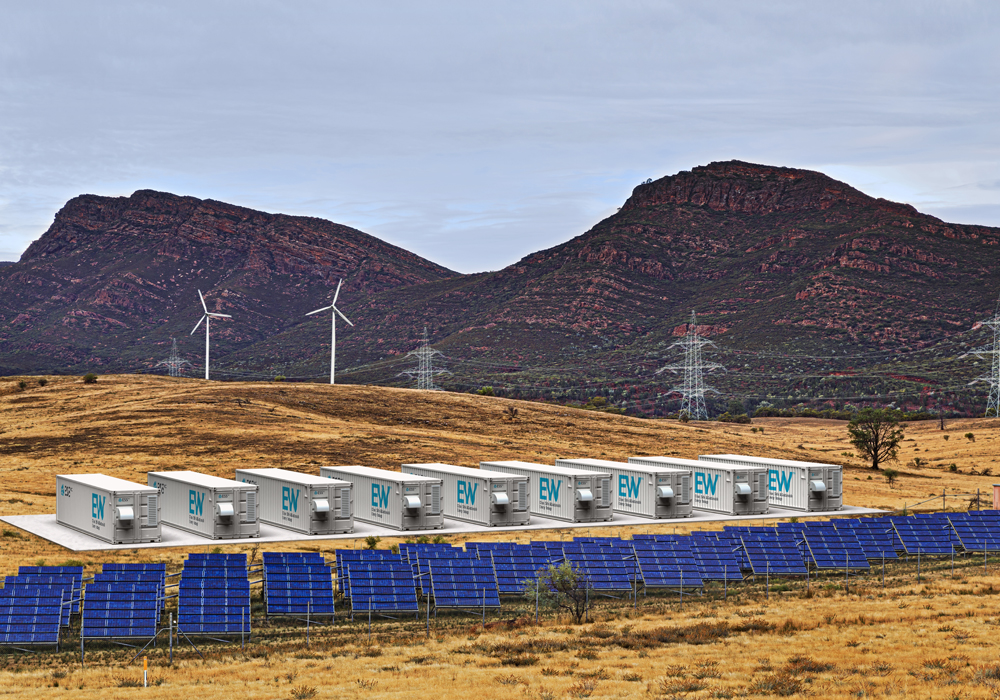By Eric Dresselhuys, CEO
This week, members of the ESS team were in Australia for All Energy Australia, the largest energy conference in Oceania, to engage with a broad range of market stakeholders including utilities, regulators, power producers and large energy users. It became immediately clear that Australia is ready for long-duration energy storage (LDES) – and a lot of it.
Australia is moving rapidly towards the decarbonized energy future. The Australian Government’s Powering Australia plan Includes an investment of AU$20 billion by 2030 for upgrades to the electricity grid to support more renewable power. At the state level, the government of Victoria has pledged to legislate Australia’s largest renewable energy storage targets: 2.6 gigawatts of renewable energy storage capacity by 2030 and 6.3 gigawatts of storage by 2035. New South Wales has also recognized the critical need for energy storage, calling for the procurement of 2 GW of LDES in its Electricity Infrastructure Roadmap.
These targets and investments are a critical start: McKinsey & Co. and the LDES Council predict that Australia will require up to 40 GW of LDES by 2040 to meet the country’s energy and climate goals.
Currently, Australia mostly generates electricity with coal and gas-fired power stations (32.5 per cent of Australia’s electricity came from clean energy sources in 2021). As the country transitions to clean, renewable sources of energy, there has been a cascade of coal plant shutdown announcements. Significantly, AGL Energy – Australia’s largest emitter of greenhouse gases – announced it will shut the Loy Yang A power station in Victoria which provides ~30% of Victoria’s power.
In order for renewable energy to replace these retiring coal fired power stations and deliver baseload energy, we know that LDES will be necessary. ESS’ iron flow technology is an ideal storage solution for the Australian climate. Iron flow batteries are safe and nontoxic, and have no risk of thermal runaway, which makes them ideal for wildfire-prone regions. And, they do not require air conditioning, operating efficiently at high ambient temperatures.
In addition to replacing large central power stations, it will be critical not to leave behind the approximately 500,000 Australians who live in off-grid locations and rely on diesel generators for power. These, largely Aboriginal, communities are frequently reliant upon expensive and polluting heavy fuel oil or diesel for electricity. This incurs real costs to these communities and Australian economy, particularly as unstable fossil energy costs continue to drive inflation and pose challenges to economic progress. The amount of fuel required is considerable: for example, Kaltukatjara , which is home to ~3,000 people, requires 60,000 litres of diesel fuel to be transported every eight weeks over a distance of more than 2,000 kilometres.
Now, low-cost renewables and the LDES solutions such as iron flow batteries are enabling remote grids to replace polluting fossil-fired generators with solar and storage microgrids to provide affordable, clean power 24/7. For example, the Weipa bauxite mine in Queensland installed a solar plant that avoided the use of 600,000 litres of diesel each year. Beyond reducing costs, solar systems with energy storage increase energy security and improve air quality in these remote areas.
As the transition to clean energy accelerates in Australia, ESS technology is poised to play a key role in meeting the storage needs of a renewably powered Australian economy. Through our partnership with Energy Storage Industries Asia Pacific, ESS Energy Warehouse products will be delivered to and ultimately assembled in Australia, providing iron flow batteries to deliver urgently needed safe and sustainable energy storage while avoiding the supply chain and operational challenges associated with other technologies, such as lithium ion.
Through this partnership, we look forward to playing a key role in decarbonizing the Australian energy system and providing clean, safe and sustainable energy to communities throughout the region.

